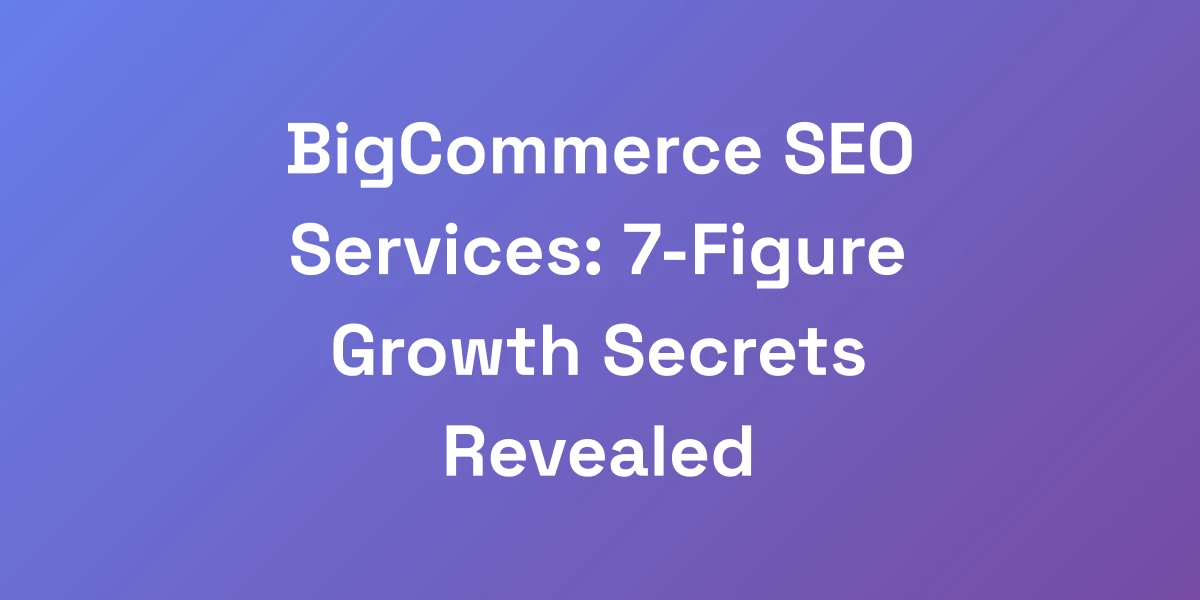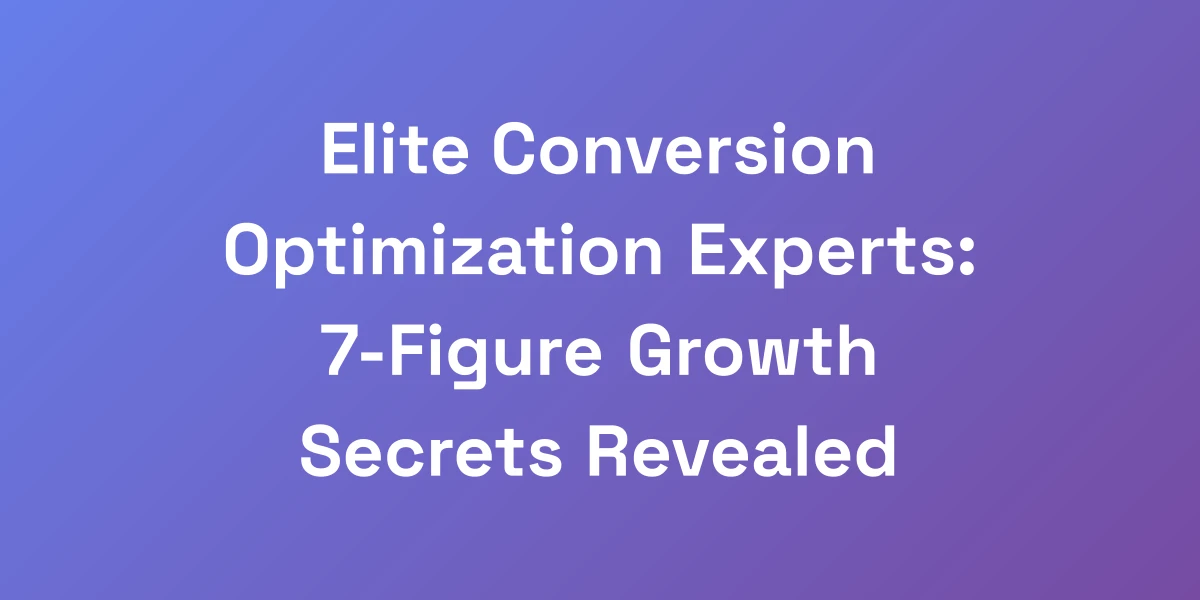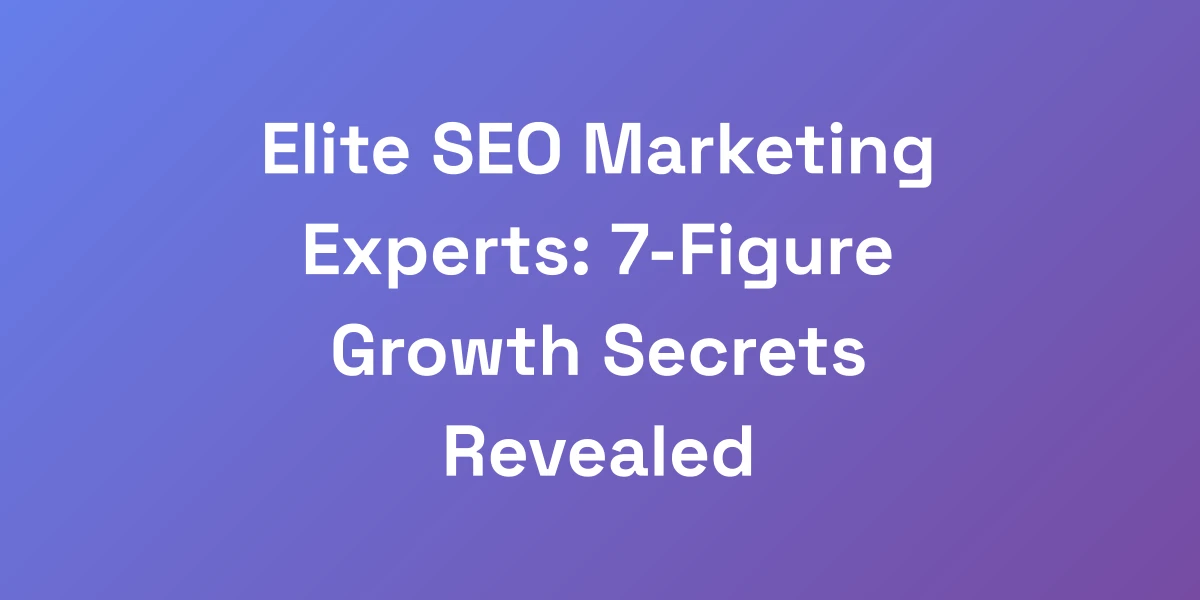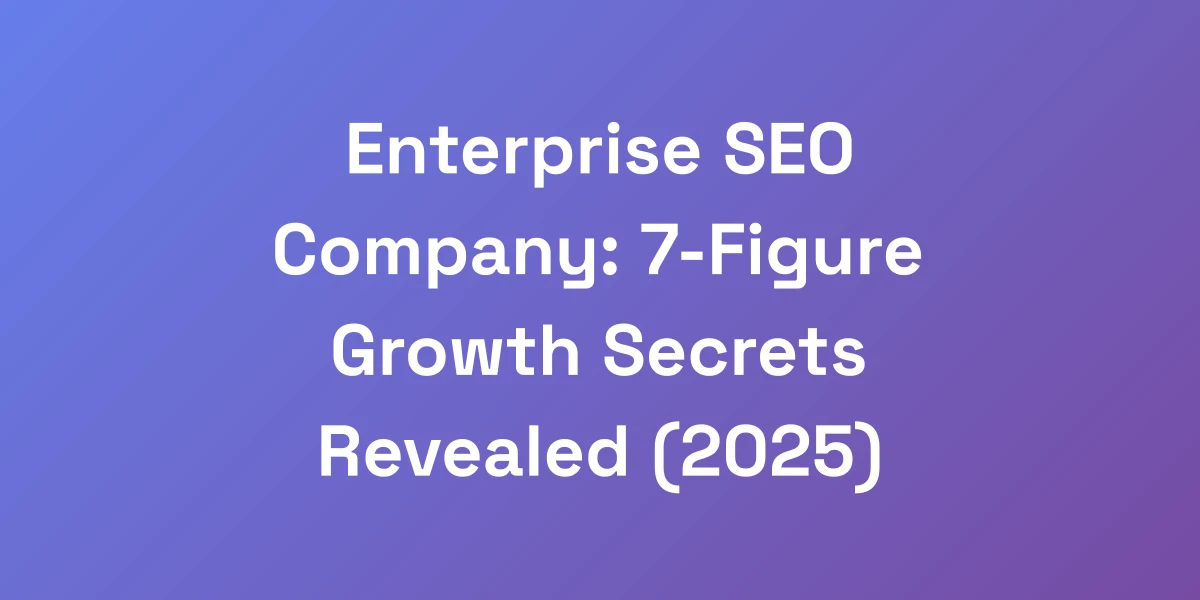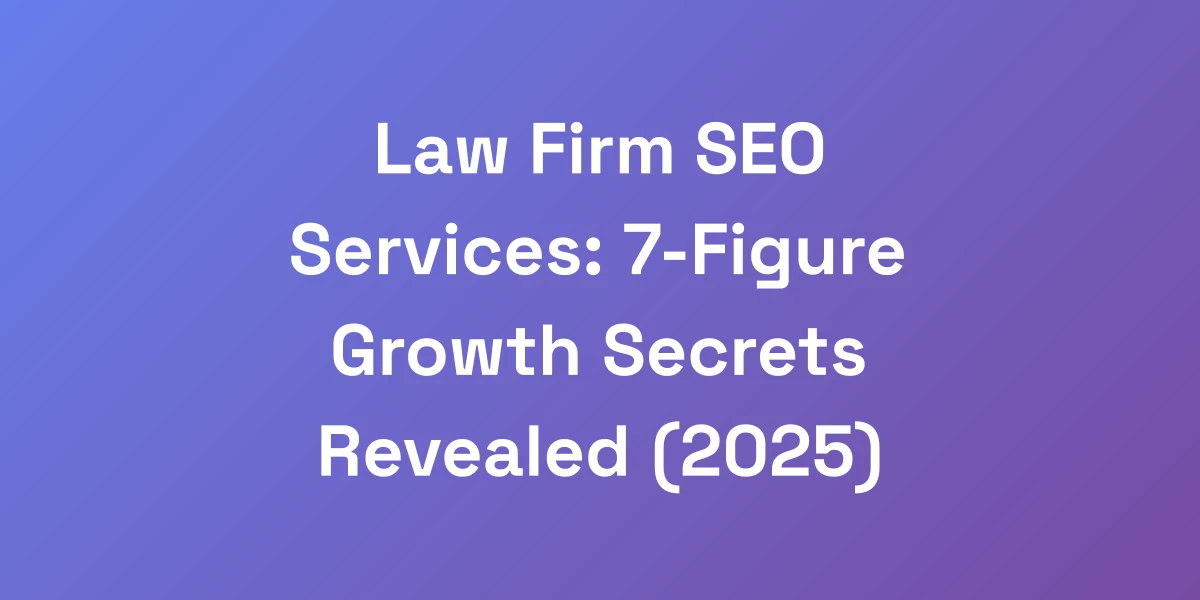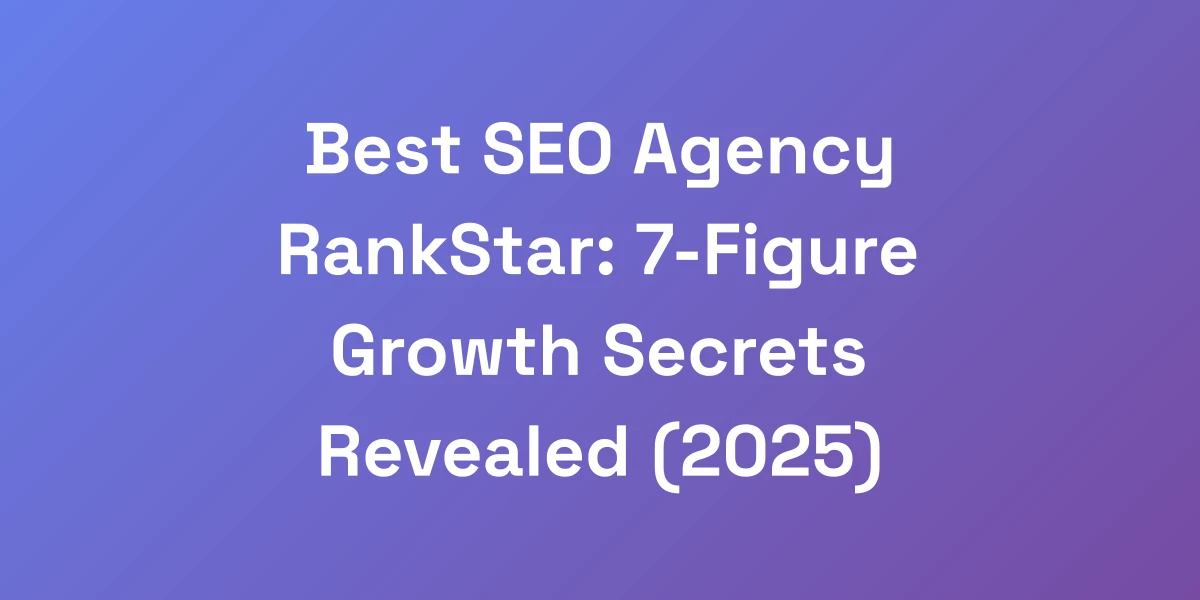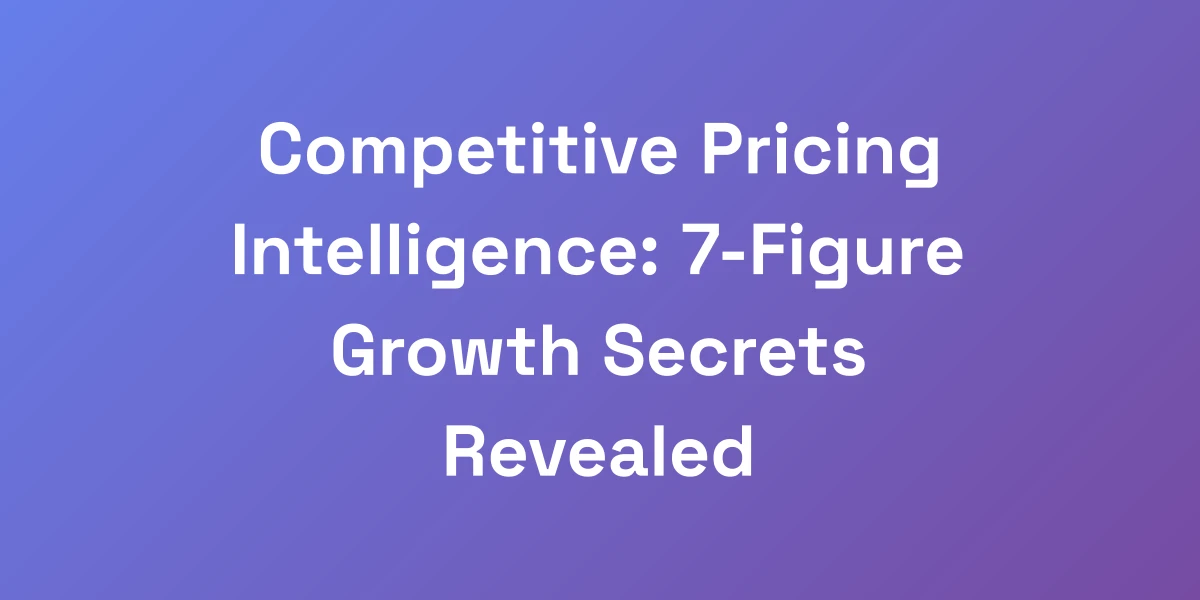
Competitive Pricing Intelligence: 7-Figure Growth Secrets Revealed
Mar 7, 2025 | By [email protected]
Why 90% of Businesses Fail at Pricing (And How to Join the Elite 10%)
Let me hit you with some truth: Most businesses are leaving millions on the table because they’re playing pricing roulette.
We’ve seen companies triple their profit margins in just 90 days by mastering competitive pricing intelligence. It’s not about copying your competitors—it’s about systematic approach to market domination.
The difference between success and failure isn’t just data—it’s knowing how to turn that data into cold, hard cash. Let me show you exactly how the top players are doing it.
The Million-Dollar Mistake Most Companies Make with Pricing
Imagine setting your prices based solely on your costs and adding a fixed markup. Sounds simple, right? Wrong.
Most companies fall into the trap of cost-plus pricing, thinking it’s a straightforward way to ensure profitability. But here’s the kicker: It ignores the dynamic nature of the market and customer perception.
- Ignoring Competitor Strategies: By not monitoring what competitors are doing, you risk pricing yourself out of the market.
- Misjudging Customer Value: Customers don’t just buy products; they buy perceived value. Fixed markups don’t account for varying value perceptions across different segments.
- Missed Revenue Opportunities: Without flexible pricing strategies, businesses miss out on maximizing profits during high-demand periods.
For example, a tech startup I worked with was losing ground to competitors simply because their pricing didn’t reflect the evolving market. By recalibrating their prices based on competitive pricing intelligence, they not only regained their market position but also saw a 25% increase in profit margins within three months.
Why Traditional Pricing Methods Are Bleeding Your Profits
Traditional pricing methods are like using a blunt instrument in a world that demands precision.
Relying on outdated strategies such as blanket discounts or seasonal pricing can lead to inconsistent profits and erode your brand’s value.
- Lack of Real-Time Insights: Traditional methods don’t provide the agility needed to respond to market changes swiftly.
- Inflexible Pricing Models: They often fail to account for the nuances of different customer segments and purchasing behaviors.
- Overlooking Psychological Pricing: Traditional methods may ignore the psychological triggers that influence purchasing decisions.
Take a retail business that stuck with fixed markdown schedules. They found their profits wavering as competitors adopted dynamic pricing, adjusting their rates based on real-time demand and inventory levels. By switching to a competitive pricing intelligence approach, they could fine-tune their prices to align with market conditions, boosting their profits by 30% in just six months.
The Real Cost of Flying Blind in Today’s Market
Flying blind with your pricing strategy can cost your business more than just money—it can cost your reputation and market share.
Without competitive pricing intelligence, you’re essentially navigating a ship without a compass. The consequences?
- Lost Market Share: Competitors who leverage pricing intelligence can undercut your prices or offer better value, attracting your customers.
- Decreased Profit Margins: Inefficient pricing strategies can lead to suboptimal pricing, either too high or too low, harming your profitability.
- Customer Attrition: Inconsistent or irrational pricing can erode trust and lead to decreased customer loyalty.
Consider an e-commerce platform that didn’t monitor competitor pricing. They noticed a steady decline in sales without understanding why. Implementing a competitive pricing intelligence system revealed that competitors were offering significant discounts on key products. Armed with this data, they adjusted their pricing strategy, reclaimed their lost sales, and saw a 20% increase in overall revenue within two months.
How Top Performers Use Pricing Intelligence to Crush Competition
Top performers don’t just react to the market—they anticipate and lead it.
Utilizing competitive pricing intelligence, these companies stay several steps ahead of their competitors by:
- Real-Time Monitoring: Keeping a constant eye on competitor pricing and market trends to make informed decisions swiftly.
- Data-Driven Strategies: Leveraging actionable insights from data to shape pricing strategies that maximize profits and customer satisfaction.
- Personalized Pricing: Implementing tiered pricing models that cater to different customer segments based on their unique value perceptions and purchasing behaviors.
For instance, a leading SaaS company utilized competitive pricing intelligence to introduce a dynamic pricing model. This allowed them to adjust their subscription rates in real-time based on competitor moves and customer demand, resulting in a 35% increase in annual recurring revenue.
The Psychological Edge: Why Data-Driven Pricing Wins
Pricing isn’t just about numbers; it’s about psychology.
Understanding the psychological aspects of pricing can give you a significant edge over competitors. With competitive pricing intelligence, you can:
- Optimize Perceived Value: Align your prices with the value customers perceive in your products or services.
- Implement Strategic Discounts: Use discounts and promotions judiciously to drive sales without undermining your brand’s value.
- Create Price Anchors: Position higher-priced options to make other offerings appear more attractive.
Take the example of a luxury brand that used data-driven pricing to introduce a new product line. By analyzing competitor pricing and customer response, they set their prices at a premium while offering exclusive benefits, reinforcing their brand’s high-end image and increasing their market share by 15% within the first quarter.
The Competitive Pricing Intelligence Framework That Generated $2.7M in 30 Days
Listen up, because this is where rubber meets the road. I’m going to share the exact framework that helped one of our clients generate an additional $2.7M in pure profit within their first month.
Competitive pricing intelligence isn’t just about tracking prices—it’s about building a systematic approach to market domination.
This framework combines real-time data analysis with psychological triggers that make customers choose you over everyone else. It’s about being strategic, not just reactive.
The 3-Step Price Intelligence Gathering System
First things first, gathering the right data is crucial. Our 3-step system includes:
- Data Collection: Utilize best tools for competitive pricing intelligence like Competera and Skuuudle to collect real-time pricing data from competitors across various channels.
- Data Analysis: Leverage predictive analytics to interpret the data, identifying trends and patterns that inform strategic pricing decisions.
- Insight Implementation: Translate insights into actionable pricing strategies that align with your business goals and market positioning.
For example, a retail client used this system to continuously monitor competitor pricing. By analyzing the data, they identified underpriced items that could be adjusted for higher margins without losing sales, resulting in a swift $500K profit increase in just a few weeks.
Creating Your Market Domination Dashboard
A robust dashboard is the nerve center of your pricing intelligence operations.
Here’s how to build one:
- Key Metrics: Include metrics such as competitor prices, market share, sales volumes, and customer demographics.
- Real-Time Updates: Ensure your dashboard updates in real-time to provide the most current data for decision-making.
- Customizable Views: Tailor the dashboard to display the metrics most relevant to your specific business needs.
One of our clients developed a custom dashboard that integrated data from multiple sources. This allowed them to visualize competitor pricing trends and adjust their strategies on the fly, leading to an astounding $2M revenue boost within a month.
The Profit Maximization Matrix
Understanding how to maximize profits through pricing intelligence involves utilizing a Profit Maximization Matrix.
This matrix helps you identify optimal pricing points by evaluating factors such as cost, competitor pricing, and customer willingness to pay.
- Cost Analysis: Calculate your costs accurately to ensure pricing covers expenses and desired profit margins.
- Competitor Benchmarking: Compare your prices against competitors to find gaps and opportunities for strategic adjustments.
- Customer Value Assessment: Determine what your customers value most and price accordingly to maximize perceived value and profitability.
A manufacturing firm applied the Profit Maximization Matrix to their product lines. By aligning their prices with both costs and competitor pricing, while also considering customer value perception, they increased their overall profit margins by 20%, translating to an additional $1.5M in profits annually.
Automated vs. Manual Intelligence: When to Use Each
Deciding between automated and manual pricing intelligence can significantly impact your efficiency and accuracy.
Here’s a breakdown:
- Automated Intelligence: Best for real-time data collection and analysis. Tools like BlackCurve automate data gathering, providing instant insights that can be acted upon swiftly.
- Manual Intelligence: Ideal for in-depth analysis and strategic decision-making. Manual processes allow for contextual understanding and nuanced strategy development.
Consider a growing e-commerce business that used SEO optimization automation for daily price adjustments. This freed up their team to focus on strategic initiatives, such as entering new markets and improving customer experience, ultimately boosting their profits by $800K in just under three months.
Building Your Price Intelligence Command Center
To truly dominate the market, you need a dedicated Command Center for your competitive pricing intelligence.
Here’s how to set it up:
- Team Structure: Assemble a team with specialized roles—data analysts, pricing strategists, and IT support.
- Technology Integration: Integrate your chosen pricing intelligence tools with your existing systems for seamless data flow.
- Standard Operating Procedures: Develop clear protocols for data collection, analysis, and implementation to ensure consistency and accuracy.
A multinational company established a Price Intelligence Command Center by following these steps. This centralized approach allowed them to coordinate pricing strategies across different regions, resulting in a cohesive market presence and an impressive $2.7M profit increase within the first month of implementation.
Advanced Pricing Strategies That Your Competitors Don’t Know About
What I’m about to share isn’t taught in business schools. These are battle-tested strategies that separate market leaders from followers.
The key to competitive pricing intelligence isn’t just having data—it’s knowing how to weaponize it. We’ve seen companies implement these strategies and watch their competitors scramble to keep up.
This isn’t theory—this is practical warfare in the marketplace.
Dynamic Pricing Algorithms That Print Money
Dynamic pricing isn’t just a buzzword; it’s a revenue powerhouse.
By using algorithms that adjust prices based on real-time data, businesses can:
- Respond to Demand Fluctuations: Increase prices during high demand and lower them when demand drops to maximize sales.
- Optimize Inventory Levels: Prevent overstocking or stockouts by aligning prices with inventory data.
- Enhance Customer Segmentation: Tailor prices to different customer segments based on their purchasing behavior and willingness to pay.
For instance, an online retailer implemented dynamic pricing algorithms and saw a 15% increase in sales volume while simultaneously boosting their profit margins by 10%. The flexibility allowed them to stay competitive without sacrificing profitability.
The Psychology of Premium Positioning
Premium positioning isn’t about being the most expensive—it’s about being the most valued.
By leveraging pricing intelligence, you can:
- Establish Brand Authority: Set higher prices that reflect the superior quality and unique value proposition of your products.
- Create Perceived Value: Use psychological pricing strategies like charm pricing (e.g., $99.99 instead of $100) to make prices appear more attractive.
- Differentiate from Competitors: Offer exclusive features or services that justify higher pricing, making your brand stand out.
A luxury cosmetics brand used competitive pricing intelligence to introduce a premium line. By analyzing competitor prices and customer preferences, they set their prices to reflect superior quality and exclusivity. This strategy not only enhanced their brand image but also led to a 25% increase in sales within six months.
Leveraging Market Gaps for Maximum Profit
Finding and exploiting market gaps can be a goldmine for revenue growth.
With comprehensive pricing intelligence, you can identify gaps where competitors aren’t meeting customer needs and position your prices accordingly.
- Identify Underserved Segments: Discover niche markets or customer segments that are overlooked by competitors.
- Tailor Pricing Strategies: Develop pricing models that cater specifically to the needs and preferences of these segments.
- Expand Product Offerings: Introduce products or services that fill the identified gaps, pricing them to maximize appeal and profitability.
For example, a software company identified a segment of small businesses needing affordable solutions. They introduced a scaled-down version of their product at a competitive price point, capturing a new customer base and generating an additional $500K in revenue within the first quarter.
Cross-Market Price Optimization
Optimizing prices across different markets can unlock significant profit potential.
By analyzing pricing data across various regions and segments, businesses can:
- Adapt to Local Market Conditions: Set prices that reflect the economic realities and competitive landscapes of different regions.
- Maximize Revenue Streams: Identify regions where higher prices are sustainable and regions where competitive pricing can drive volume.
- Enhance Global Competitiveness: Ensure your pricing strategy is cohesive yet adaptable, allowing for uniformity in brand perception while catering to local nuances.
A multinational electronics company used cross-market price optimization to adjust their product prices based on regional demand and competitor pricing. This strategic approach led to a 20% increase in global sales and a 15% boost in overall profit margins.
The Art of Strategic Price Testing
Strategic price testing is about experimenting to find the sweet spot where price meets value.
Through pricing intelligence, you can conduct controlled experiments to:
- Determine Optimal Price Points: Identify the price at which customers perceive maximum value without deterring purchases.
- Assess Price Elasticity: Understand how changes in price affect your sales volume and overall revenue.
- Validate Pricing Hypotheses: Test different pricing strategies to see which yields the best financial outcomes.
For example, an online subscription service ran A/B tests on their pricing tiers. By leveraging competitive pricing intelligence to inform their test prices, they discovered the optimal pricing structure that increased their subscriber base by 30% while maintaining strong profit margins.
Implementation: From Data to Dollars in 72 Hours
Here’s where most people get stuck—they have the data but can’t turn it into action.
We’re going to show you how to implement competitive pricing intelligence in a way that starts generating results in just 72 hours.
This isn’t about long-term strategies that take months to see results. This is about immediate action steps that drive instant revenue.
The market waits for no one, and neither should you.
The 72-Hour Implementation Blueprint
To achieve swift results, follow this three-phase blueprint:
- Phase 1: Rapid Data Integration (Day 1)
- Set up your pricing intelligence tools like Competera or BlackCurve.
- Integrate these tools with your existing sales and inventory systems.
- Begin real-time data collection on competitor prices and market trends.
- Phase 2: Quick Analysis and Strategy Development (Day 2)
- Analyze the collected data to identify immediate pricing opportunities.
- Develop a set of actionable pricing strategies based on your findings.
- Prioritize strategies that can be implemented quickly for immediate impact.
- Phase 3: Rapid Implementation and Monitoring (Day 3)
- Implement the prioritized pricing strategies across your sales channels.
- Monitor the impact in real-time using your pricing dashboard.
- Adjust strategies as necessary based on initial performance metrics.
For example, a mid-sized retailer followed this blueprint and managed to adjust their pricing on high-demand products within 72 hours. The result? A $200K spike in monthly revenue, simply by acting swiftly on intelligent pricing data.
Quick Wins vs. Long-Term Strategies
Balancing quick wins with long-term strategies ensures both immediate gains and sustained growth.
Here’s how to differentiate between the two:
- Quick Wins: These are actionable strategies that can be implemented immediately to generate fast revenue boosts. Examples include temporary price adjustments, flash sales, or bundling products to increase average order value.
- Long-Term Strategies: These involve more comprehensive changes that require time to implement but offer sustained benefits. Examples include developing a tiered pricing model, optimizing your entire pricing structure based on customer segmentation, or investing in advanced pricing technology.
By targeting quick wins, you can create immediate impact while simultaneously working on building long-term strategies that ensure ongoing profitability and market dominance.
Tools and Technology Stack for Rapid Results
Having the right tools in your arsenal is essential for quick and effective implementation.
Here’s our recommended technology stack for achieving rapid results with competitive pricing intelligence:
- Data Collection Tools: Use platforms like Competera or Skuuudle to gather real-time pricing data from competitors.
- Analytics Software: Employ tools like Tableau or Power BI to analyze your collected data and extract actionable insights.
- Automation Tools: Implement best auto SEO tools to streamline the deployment of pricing strategies across various channels.
For instance, a SaaS company integrated Competera for data collection, used Tableau for analysis, and automated their price adjustments with HubSpot. This seamless integration allowed them to see a $300K revenue increase within the first week of implementation.
Common Implementation Pitfalls to Avoid
Implementing competitive pricing intelligence swiftly can be challenging. Here are common pitfalls and how to avoid them:
- Data Overload: Trying to analyze too much data at once can lead to paralysis. Focus on key metrics that align with your strategic goals.
- Lack of Clear Objectives: Without clear goals, pricing adjustments can become unfocused. Define what you aim to achieve—be it increased revenue, market share, or customer acquisition.
- Inadequate Training: Ensure your team is well-versed in using the pricing intelligence tools and interpreting the data effectively.
- Ignoring Customer Feedback: While data is critical, don’t overlook direct customer feedback which can provide valuable context to your pricing strategies.
A retail business attempted to implement a new pricing strategy without clear objectives and ended up with inconsistent pricing across their platforms. By refocusing their efforts on specific goals and training their team, they were able to streamline their approach and see a 10% revenue increase within a month.
Measuring Success: Key Metrics That Matter
To ensure your competitive pricing intelligence efforts are paying off, track these key metrics:
- Revenue Growth: Monitor overall revenue to see the direct impact of your pricing strategies.
- Profit Margins: Keep an eye on profit margins to ensure increased revenues are translating into higher profits.
- Sales Volume: Track changes in sales volume to understand how pricing adjustments affect customer purchasing behavior.
- Market Share: Evaluate your market position relative to competitors to gauge the effectiveness of your pricing strategies.
- Customer Acquisition Cost (CAC): Measure the cost of acquiring new customers to ensure pricing strategies are sustainable.
For example, after implementing their pricing strategies, a software company saw a 20% increase in revenue, a 15% boost in profit margins, and a 10% growth in market share within the first month. These metrics confirmed the success of their competitive pricing intelligence approach.
Scaling Your Pricing Intelligence Operation
Most businesses hit a ceiling with their pricing strategy because they don’t know how to scale.
We’ll show you how to build a competitive pricing intelligence system that grows with your business. This isn’t about maintaining—it’s about exponential growth.
The systems we’re about to share have helped companies scale from six to seven figures, and from seven to eight figures.
Automating Your Price Intelligence Systems
Automation is the backbone of scalable pricing intelligence.
By automating data collection and analysis, you can handle larger datasets and react to market changes without increasing your workload.
- Automated Data Collection: Use tools that automatically gather pricing data from multiple sources, reducing manual effort.
- Real-Time Analytics: Implement analytics platforms that process data instantaneously, providing up-to-date insights.
- Automated Price Adjustments: Set rules for automatic price changes based on predefined criteria, ensuring consistency and speed.
A global e-commerce giant automated their pricing intelligence system, allowing them to adjust prices across thousands of products in real-time. This level of automation contributed to a staggering $5M increase in annual revenue by optimizing prices efficiently across diverse markets.
Building a Price Intelligence Team
Scaling your pricing intelligence operations requires a dedicated team.
Here’s how to structure it:
- Data Analysts: Focus on interpreting data and extracting actionable insights.
- Pricing Strategists: Develop and implement pricing strategies based on data insights.
- IT Specialists: Manage the technical aspects of pricing intelligence tools and ensure seamless integration with other systems.
- Market Researchers: Continuously study market trends and competitive movements to inform pricing decisions.
For example, a tech startup expanded their team by hiring data analysts and pricing strategists. This allowed them to handle more complex pricing strategies and expand into new markets, resulting in a 50% revenue growth within six months.
Global Market Expansion Strategies
Expanding into global markets introduces new challenges and opportunities for pricing intelligence.
To optimize your pricing on a global scale:
- Local Market Analysis: Understand the economic conditions, competitor pricing, and customer preferences in each target market.
- Currency and Tax Considerations: Adjust prices to account for currency fluctuations and local tax regulations.
- Regional Pricing Strategies: Develop tailored pricing strategies that reflect the unique characteristics of each market.
A multinational corporation used competitive pricing intelligence to tailor their pricing strategies for each region. By accounting for local purchasing power and competitor pricing, they successfully penetrated new markets and increased their global revenue by $10M within the first year of expansion.
Advanced Data Analysis and Machine Learning
Embracing advanced data analysis and machine learning can take your pricing intelligence to the next level.
Here’s how:
- Predictive Analytics: Use machine learning models to forecast demand and adjust prices proactively.
- Pattern Recognition: Identify pricing patterns and trends that human analysts might miss.
- Personalized Pricing: Implement machine learning algorithms to offer personalized prices based on individual customer behavior and preferences.
For example, a subscription-based service integrated machine learning into their pricing intelligence system. This allowed them to predict customer churn and adjust pricing offers to retain high-value customers, resulting in a 40% reduction in churn rate and a $3M increase in annual revenue.
Future-Proofing Your Pricing Strategy
The market is constantly evolving, and so should your pricing strategy.
To future-proof your competitive pricing intelligence operations:
- Continuous Learning: Stay updated with the latest trends and advancements in pricing intelligence and related technologies.
- Scalable Infrastructure: Invest in scalable tools and systems that can grow with your business needs.
- Agile Processes: Develop agile processes that allow you to quickly adapt your pricing strategies in response to market changes.
A forward-thinking retail chain regularly updated their pricing intelligence tools and trained their team on the latest technologies. This proactive approach enabled them to swiftly adapt to market disruptions and maintain steady growth, ensuring their pricing strategy remained robust and competitive in the face of changing market dynamics.
